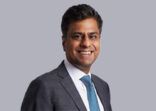Palmer manages the Baring Global Emerging Markets Fund. The fund follows a bottom-up investment process that results in a high-conviction portfolio of 40-60 stocks.
The fund is currently overweight in financials compared to its benchmark, the MSCI Emerging Markets Index.
“We are excited about secular growth in many emerging markets in the insurance space,” Palmer told FSA. “It is one of the least considered but most attractive ways to profit from the expansion of the emerging markets middle class.”
Many emerging market economies show low levels of penetration of insurance products, he explained. As the population grows wealthier, concerns about financial protection and planning for the future will become more common, driving a demand for life insurance and pension products.

“Governments are also very keen to promote growth of the private sector insurance market,” Palmer said. “As the demographic profile in emerging countries deteriorates, governments will want to move their future liabilities onto the private sector.”
Palmer also finds many opportunities in emerging market banks, driven by improvement in asset quality and the economic momentum. “Loan growth and the quality of loans are improving as a result of a greater emphasis on consumer lending, which has a better asset quality than corporate lending” he said.
Another factor is net interest margins, the difference in interest between lending and borrowing, which have been growing for many emerging market banks and boosting their profitability.
Many banks have been investing in technology, in particular on the distribution side, which lowers costs and improves their cost-to-income ratios, Palmer noted.
The fund’s biggest financial holdings are Chinese: China Construction Bank, Ping An Insurance and AIA. Russia’s Sberbank is the only other financial company among the fund’s top ten holdings.
Financials account for 35% of the fund’s assets, according to the fund’s fact sheet. However, the top three holdings are names from the IT sector that are widely-held: Alibaba, Samsung and Taiwan Semiconductor. IT accounts for 29% of the fund’s NAV.
The fund returned 39.3% in US dollars over the past three years ending 31 March, ranking fourth out of 66 emerging market equity funds authorised for sale in Hong Kong, and outperforming the MSCI Emerging Markets Index by 9%, according to FE data.
The lacklustre year
However, 2016 was not a good year for the fund, as it returned only 3.7% compared to a 11.6% growth of the index. Palmer attributes the under-performance to a strong recovery in cyclical stocks in 2016. His fund follows the fundamental approach “growth at a reasonable price”, and was tilted toward the value factor, which did not perform as well.
Some macro risks remain, he said. Emerging markets would suffer should a global trade war develop, leading to lower trade volumes and impacting profitability. Investors would also demand a higher equity risk premium, which would lead to market re-pricing and more volatility.
Adoption of a too aggressive monetary tightening stance by the US Fed would also present a risk of derailing the global recovery and triggering a recession that would impact emerging markets, Palmer said.
Baring Global Emerging Markets Fund vs benchmark and category average


















